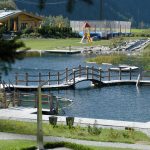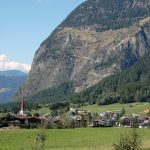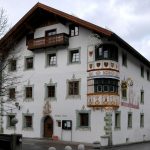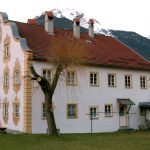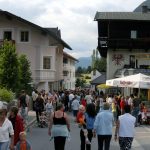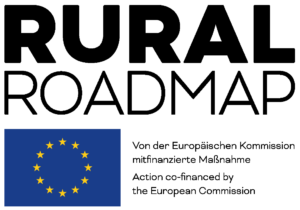
Umhausen, Tyrol, Austria
The municipality of Umhausen has 3,000 inhabitants in an area of 13.74 km² consists of five districts. It lies in one of the valley steps of the Ötz valley at an altitude of 1,040 m and at the time of the sumpter traffic over the main ridge of the Alps had an important function as a rest stop.
The Tyrolean Ötz valley developed into one of the top tourist regions in the Alpine area during the last century whereby the agriculturally influenced Umhausen was not left untouched and resulted in a division into farming, trade and tourism. Due to the region spanning changes, especially the traffic infrastructure and made worse by the closing of a traditional guest house in the centre of the village, in the last third of the 20th century Umhausen threatened to become a pure commuter and sleeping village with poor village structures and a thoroughfare on the way to the actual destination.
At the beginning of the nineties a small interest group was founded which shortly became the village renewal movement which in the following years, with the strong participation of a great part of the population, worked out a role model and a village renewal concept. They were used as a basis for the following implementation of a multitude of manifold projects. Small measures, overriding design and renovation of the village image and farmland were followed by ever more ambitious projects that were all directed towards strengthening the economic base, giving nature and the environment a higher value, to increase family friendliness and to develop health, education and culture.
The following can be named exemplarily: the construction of a Kneipp facility, the conversion of the open air swimming pool to biological water purification and a range of further activities with the theme water, the revitalisation of a guest house and the village centre, the installation of a telecommunication centre as an educational platform for the rural area, the promotion of direct marketing of farm products, the comprehensive improvement of the tourist infrastructure and the accessibility of the Stuiben waterfall, the highest waterfall in Tyrol and the creation of an art workshop and other cultural initiatives.
The historical importance as a village on a mountain pass was the starting point for the Umhausen lighthouse project for the erection of an archaeology park under the patronage of the glazier mummy from “Hauslabjoch” the stone age old pacesetter “Ötzi”. With the help of, at first sceptical, experts from the archaeological institute of the University of Innsbruck the “Ötzi village” was built on an appropriate site re-using stone age film scenery and additional fences, huts and enclosures. A newly built information centre houses an exhibition, info boards and several services amongst which is a video presentation which helps visitors to choose the right guided tour. Offers, especially for children and young people, to try their hand at practical experimental archaeology particularly catch the eye.
Neolithic bread baking ovens, ceramic kilns, stone cutting places and a small garden acre with early types of corn and field fruits are further parts of the “Ötzi village”. They make it possible to observe, learn and practice the making of tools and clothes and the production and preparation of food under expert and museum educational guidance. The open air ground is full of animals: Aurochs, Pzewalski horses, Mangalitza pigs, and mountain goats give an impression of Neolithic domestic animals.
The archaeological open air park is widely accepted and proves to be a well visited attraction especially for families and young people.
The municipality Umhausen found a special niche when looking for an increase in tourist attractiveness and in awareness of its location on a historical mountain pass. Not only the archaeological open air park that attracts ever more visitors but also the qualitative agro-tourist development and the restructuring of the traditional cultural landscape strengthen the economy, self confidence and faith in the future of the Umhausen citizens.
Evaluated: 2008
